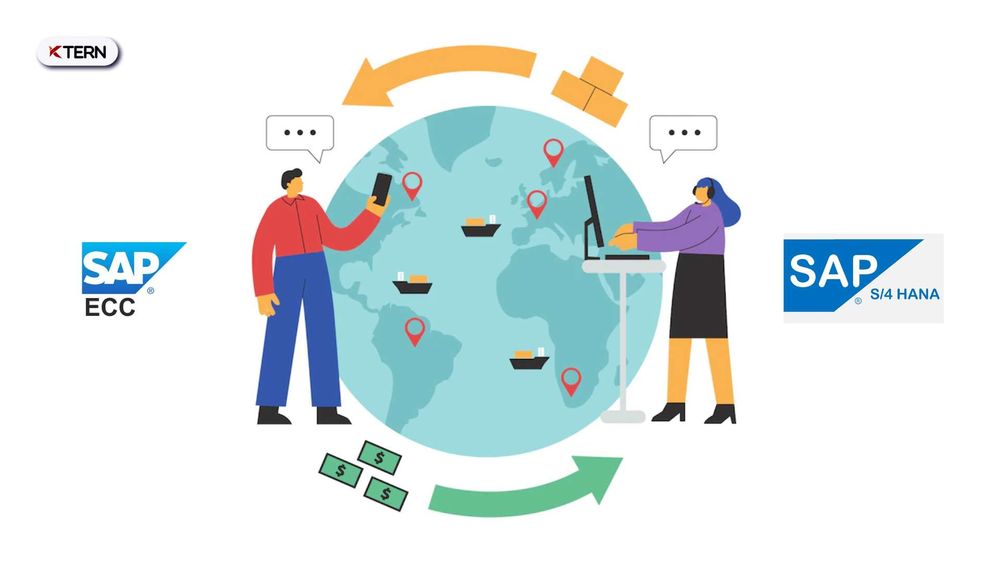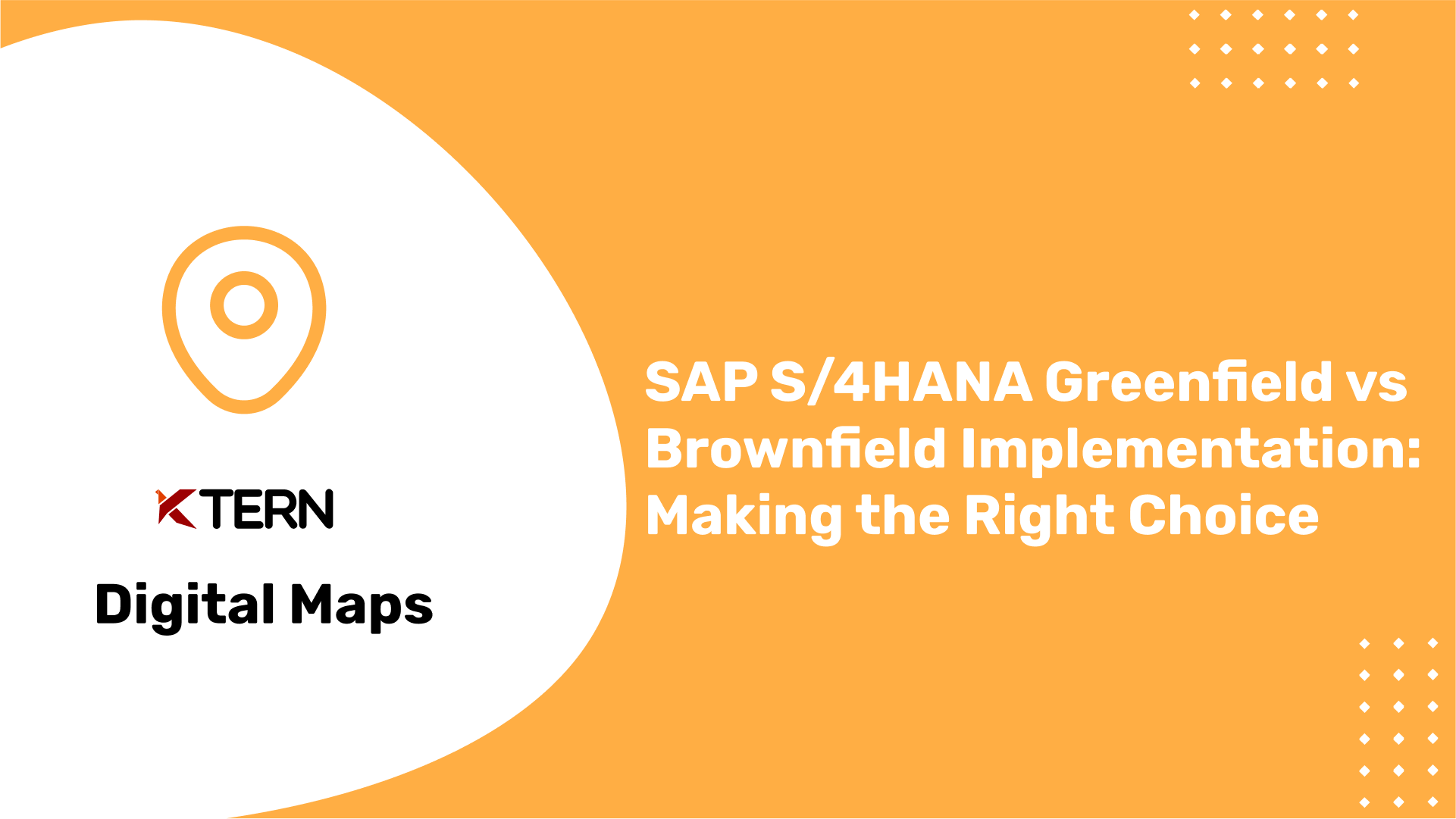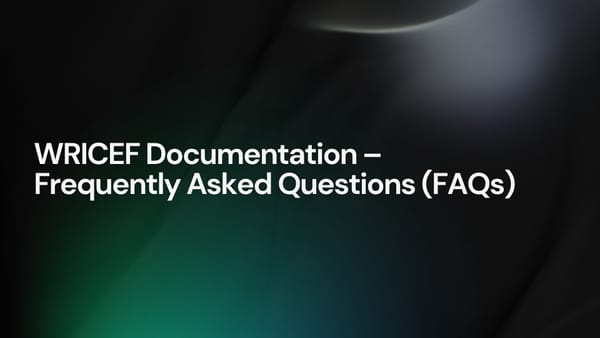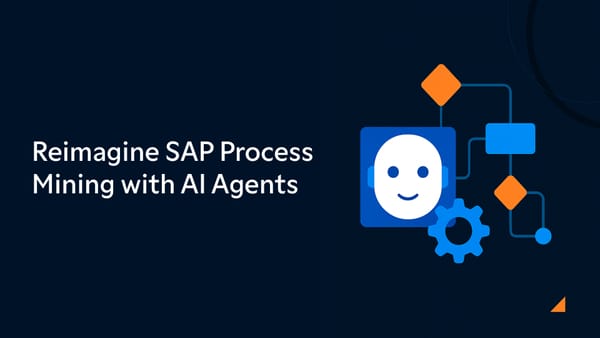SAP S/4HANA : New Implementation Vs System Conversion
Table of Contents
- Introduction
- Overview of SAP S4HANA
- Conversions in SAP Systems
- Before New Implementation (Greenfield) vs System Conversion (Brownfield)
- Key Considerations influencing the choice between a Greenfield and Brownfield Implementation
- Conclusion
Introduction
Migration to SAP S/4HANA is the process of upgrading from an earlier version of SAP ERP (such as SAP ECC 6.0) to the latest version of SAP's flagship enterprise resource planning (ERP) system. It involves transferring data, customizations, and processes to the new system, as well as implementing new functionality and taking advantage of the latest technologies available with SAP S/4HANA. In this article, lets see more about system conversion and new filed implementation

Overview of SAP S/4HANA
SAP S/4HANA is a real-time, in-memory, columnar database platform that is designed to run on-premise, in the cloud, or in a hybrid deployment. It offers a simplified data model that eliminates redundant data storage and reduces the complexity of the system. This results in faster data processing and more efficient use of hardware resources.

SAP S/4HANA offers a range of capabilities that support various business processes such as finance, sales, procurement, production, and supply chain management. It also includes advanced analytics and reporting tools that enable users to gain insights into their business operations in real-time.
SAP S/4HANA has a user-friendly interface that enables users to access the system from anywhere, on any device, and at any time. It also offers integration with other SAP products, such as SAP Ariba, SAP SuccessFactors, and SAP Concur, to provide a seamless end-to-end experience.
Conversions in SAP Systems
There are two ways to adopt SAP S/4HANA - a greenfield implementation and a brownfield implementation.
With a greenfield implementation, a new SAP S/4HANA system is built, and either the entire system is migrated from the legacy SAP ERP application to the new system in a "big bang" scenario, or individual business units are migrated sequentially to the new system in a phased rollout. With a brownfield implementation or system conversion, the existing SAP ERP system is turned into an SAP S/4HANA system through a one-step procedure with a single downtime, which includes a database migration to SAP HANA 2.0, conversion of the data from the SAP ERP data model to the SAP S/4HANA data model, and a software upgrade, which replaces SAP ERP application code with SAP S/4HANA application code.

The choice between a greenfield and brownfield implementation of SAP S/4HANA should be based on various factors such as whether the current business processes support the long-term strategy, whether you can adopt SAP Best Practices packages, whether the move to SAP S/4HANA is driven by the business or IT, whether you can convert from the SAP ERP application to SAP S/4HANA in a single step, whether you require previous transactional data in the new system, and whether landscape consolidation and process harmonization are key value drivers, and if you have a high or low number of interfaces to other systems. Ultimately, there is no right or wrong way, and each customer must choose the option that best allows them to continuously adopt SAP innovations in the future.
Before New Implementation (Greenfield) vs System Conversion (Brownfield)
SAP has long been an undisputed market leader in the ERP space. Today, SAP S/4HANA is helping companies around the world to become intelligent enterprises. As hundreds of new SAP S/4HANA systems go live every month, more and more customers are looking for guidance on how to start their journey to the new digital core.
The way you plan and execute the SAP S/4HANA program will substantially influence your ability to adopt next-generation business processes and use the new capabilities of SAP products. Needless to say, making the right choices here is of paramount importance.
Differences
With a new greenfield implementation, you build a new SAP S/4HANA system and either cut over to the new system (the so-called “big bang” scenario) or migrate the individual business units sequentially from your legacy SAP ERP application to the new system (“a phased rollout”).
With a system conversion or brownfield implementation, you turn your existing SAP ERP system into an SAP S/4HANA system. Technically, the system conversion is a one-step procedure with a single downtime and comprises of the following:
- For SAP ERP on any database: a database migration to SAP HANA 2.0 (a new database system)
- A conversion of the data from the SAP ERP data model to the SAP S/4HANA data model
- A software upgrade, that is, replacing SAP ERP application code with SAP S/4HANA application code
For SAP ERP powered by SAP HANA, transition to SAP S/4HANA is an in-place upgrade. It also requires an upgrade from SAP HANA 1.0 to SAP HANA 2.0 as an extra step. The records over the past three years show that the vast majority of SAP ERP customers decide either on conversion or on new implementation – in almost equal parts. About 5% choose other options because of their specific situations and requirements.
In the end, there is no right or wrong way. Each customer needs to choose the option that best allows them to continuously adopt SAP innovations in the future.
Key Considerations influencing the choice between a Greenfield and Brownfield Implementation
- Do your current business processes support your long-term strategy?
- Can you adopt SAP Best Practices packages or will you retain past customizations?
- Is your move to SAP S/4HANA driven by the business or IT?
- Can you convert from the SAP ERP application to SAP S/4HANA in a single step?
- Do you require previous transactional data in the new system?
- Are landscape consolidation and process harmonization key value drivers?
- Do you have a high or low number of interfaces to other systems (SAP and third-party)?
- Can your company sustain a multi-year innovation plan with incremental innovations?

We’ll go through each of the above points and explain the impact it will have on choosing the right path for your SAP S/4HANA migration.
Do your current Business Processes support your Long-Term strategy?
If your long-term strategy implies the need for business process redesign in the business areas considered key to strategic growth, or the ones expected to deliver substantial cost savings, then this is a strong indication for a greenfield implementation. If your SAP ERP system today takes no advantage of best practices or relies on dated functionality (for instance, business areas instead of profit center accounting), a new implementation is a better choice. Likewise, if you run an oversized, overcomplicated, historically grown system, a greenfield implementation is a more attractive option.
Can you adopt SAP Best Practices packages or will you retain past customizations?
Do you plan to make extensive use of SAP Best Practices packages and SAP Model Company services? If so, a greenfield implementation is a better choice. By contrast, if you see your custom enhancements and modifications as a major asset supporting your company’s unique way of operating and intend to preserve them, a brownfield conversion is a more attractive option for you.
Is your move to SAP S/4HANA driven by the business or by IT?
It’s virtually impossible to start a business transformation out of an IT project. IT-sponsored projects are typically system conversions that lay the foundation for later innovation projects driven by the business.
Can you convert from the SAP ERP application to SAP S/4HANA in a single step?
Technically, single-step conversion is possible for SAP ERP 6.0
(any enhancement package) single-stack, Unicode systems. Systems that don’t fulfill these criteria have likely experienced little maintenance in the past years. In practice, systems with dated software release levels may require somewhat more effort than the ones recently updated.
If the system can’t be converted technically in a single step, a greenfield implementation is a better choice, because the combined cost of an upgrade to SAP ERP 6.0 or a Unicode upgrade followed by a conversion to SAP S/4HANA would be prohibitively high. Moreover, combining two upgrades in a single downtime will most probably exceed the maximum system outage your business can afford.
The second factor to consider here is your rollout strategy. If you plan to roll out the system on a company-code-by-company-code basis, then a greenfield implementation approach is a better option. However, if this rollout strategy is a precaution rather than a hard constraint, you should take into account the implied cost of integrating the old and new system landscape, such as for intercompany scenarios, master data synchronization, and consolidation. Often, putting more attention on testing is a far more effective risk mitigation strategy.
Do you require previous transactional data in the new system?
When choosing between a greenfield and brownfield implementation, the requirement to retain all data in the system is a very strong indication for a system conversion. The first response is often, “Yes, we do need all data in the new system.” However, you should challenge this standpoint and design a data strategy that takes into account the available technological alternatives.
Are landscape consolidation and process harmonization key value drivers?
For companies with a track record of mergers and acquisitions, it’s often easier for different divisions to agree on a new neutral set of best practices than to debate which of the current ERPs should become the consolidation target. In this case, opt for a greenfield implementation and consolidate the system configurations and data required to start business operations into this new SAP S/4HANA system.
Do you have a high or low number of interfaces to other systems (SAP and third-party)?
In greenfield implementations, interfaces have to be (re)developed and tested, especially interfaces to third-party solutions. With a brownfield conversion, adjusting existing interfaces typically takes less effort. Thus, a high number of interfaces in the current system makes a stronger case for brownfield implementation. However, before settling on this decision, consider the new integration technologies SAP offers, especially the SAP Cloud Platform Integration and SAP Cloud Platform Integration Advisory services.
Can your company sustain a multi-year innovation plan with incremental innovations?
Although this aspect is entirely non-technical, it may in the end overturn all of the above considerations. If incremental innovation is part of your company’s philosophy, a brownfield conversion followed by innovative projects will lead to the desired outcome. However, other companies may not deem themselves capable of persistently executing a multi-year plan because they expect a shift in focus or a major change in strategy. In such cases, a greenfield implementation is the only chance to harvest the full value of SAP S/4HANA.
KTern - The Best Product for SAP S/4HANA System Conversion
Conclusion
Thus, after taking into account all the above scenarios and considerations, you can choose the right path for your SAP S/4HANA transition either through a greenfield or a brownfield implementation. A clear business strategy, business use case and a roadmap is essential before planning your move.
KTern’s Digital Maps provides an automated business process assessment with detailed project plans spanning different waves and phases for the transition. This will help you make the right choice and choose the best approach for the move to SAP S/4HANA.
If you are interested in knowing more about how to get started with the journey using KTern.AI, please do contact us for a one-on-one demo that could help you get started.




